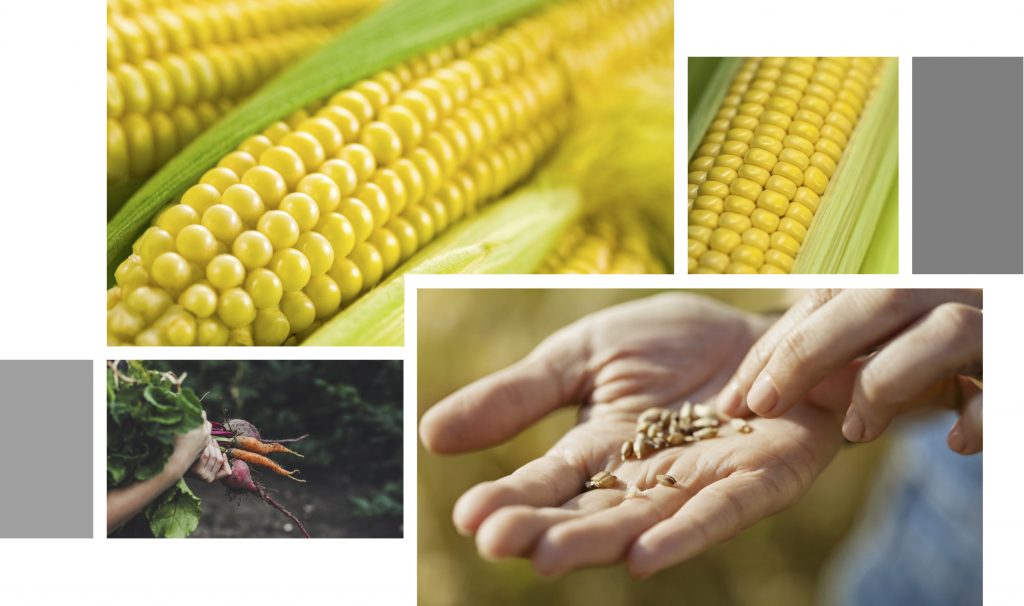Biofertilizers and Biocontrol Agents
Effective agriculture is key if we are to meet the increasing food demands caused by a growing human population.
Today we are dependent on chemical fertilizers and pesticides to preserve high crop yield. Unfortunately, high usage of chemical fertilizers and pesticides cause pollution of the air and ground water, damaging the planets ecosystems. Therefore, efforts are for finding sustainable alternatives are intensifying, including organic farming, biofertilizers and biocontrol agents.
Due to the intensive research in the field, the body of evidence that demonstrates a beneficial effect of a healthy soil microbiome is increasing.
Biofertilizers
The natural microflora of soil comprises a range of useful bacteria and fungi, including the arbuscular mycorrhiza fungi (AMF) called plant growth-promoting rhizobacteria (PGPR).
A healthy soil micro-environment is important for numerous functions, including keeping the soil rich in nutrients, transforming nutrients into plant-available compounds, and protecting both soil and plants from infection and disease.
A key part of these advantages comes from the ability of microbes to increase the amount of fertilizer that is taken up by plants. They increase the nutrient use efficiency of fertilizers and make nutrients bound in organic material available to crops through biodegradation of organic matter.
Other functions include the release of substances with plant growth regulating properties and the production of antibiotics.

Pest and biological control
Due to the adverse effects of some chemical pesticides on both human health and the environment, industry and researchers are looking into microbes for biological control as an alternative to traditional pesticides.
Biological control of plant pests and pathogens is proving very useful as a low-cost, eco-friendly, and sustainable approach for defending plants and crops from disease and infection. Therefore, the use of biocontrol microbes is increasingly accepted in sustainable agriculture.
Several products are available, but further research is needed to fully understand how to use biocontrol microbes in large-scale farming.
Research into biocontrol strategies and products aims to reduce the dependence on chemical products, for the joint benefit of human health and the environment.
Crops are vulnerable to environmental challenges such as changing climate with the risk of drought or fluting, and infection with pathogens including types of fungi, nematodes, bacteria, and viruses.
To combat these risks, plants have evolved a broad range of tactics to defend themselves. Plant defense mechanisms include a long list of both physical and chemical barriers, but also a microbial environment on the leaves and roots is of key importance for their defense.
Sustainable agriculture
Traditional fertilization strategies are mainly dependent on inorganic chemical-based fertilizers. These have been found to cause a serious threat to human health and the environment. As a consequence, there is an increasing interest in exploring the usability of beneficial microbes as biofertilizers.
And with the first promising results, it has become an important aspect in the agricultural sector to develop sustainable farming and crop production. The eco-friendly biofertilizers prompt a wide range of applications such as plant growth-promoting rhizobacteria (PGPRs), endo- and ectomycorrhizal fungi, and cyanobacteria.
But much remains to be learned to gain the full potential benefit of biofertilizers. Next-generation sequencing (NGS) strategies that evaluate the DNA content of an organism or profile the full range of organisms in a sample are now being used to screen for beneficial microbial candidates, and to help us understand how biofertilizers interact with the natural microenvironment and present their beneficial abilities.
FREE: Get our Checklist for collecting soil for microbiome profiling
Fill out the information below, and download our checklist.
References and suggested reading
- Bhardwaj et al., (2014). Biofertilizers function as key player in sustainable agriculture by improving soil fertility, plant tolerance and crop productivity. doi: 10.1186/1475-2859-13-66
- Rahman et al., (2018). Emerging microbial biocontrol strategies for plant pathogens. doi: 10.1016/j.plantsci.2017.11.012.
- Igiehon and Babalola. 2017. Biofertilizers and sustainable agriculture: exploring arbuscular mycorrhizal fungi. Doi: 10.1007/s00253-017-8344-z
- Verzeaux ei at., (2017). Agricultural practices to improve nitrogen use efficiency through the use of arbuscular mycorrhizae: Basic and agronomic aspects. Doi: 10.1016/j.plantsci.2017.08.004
